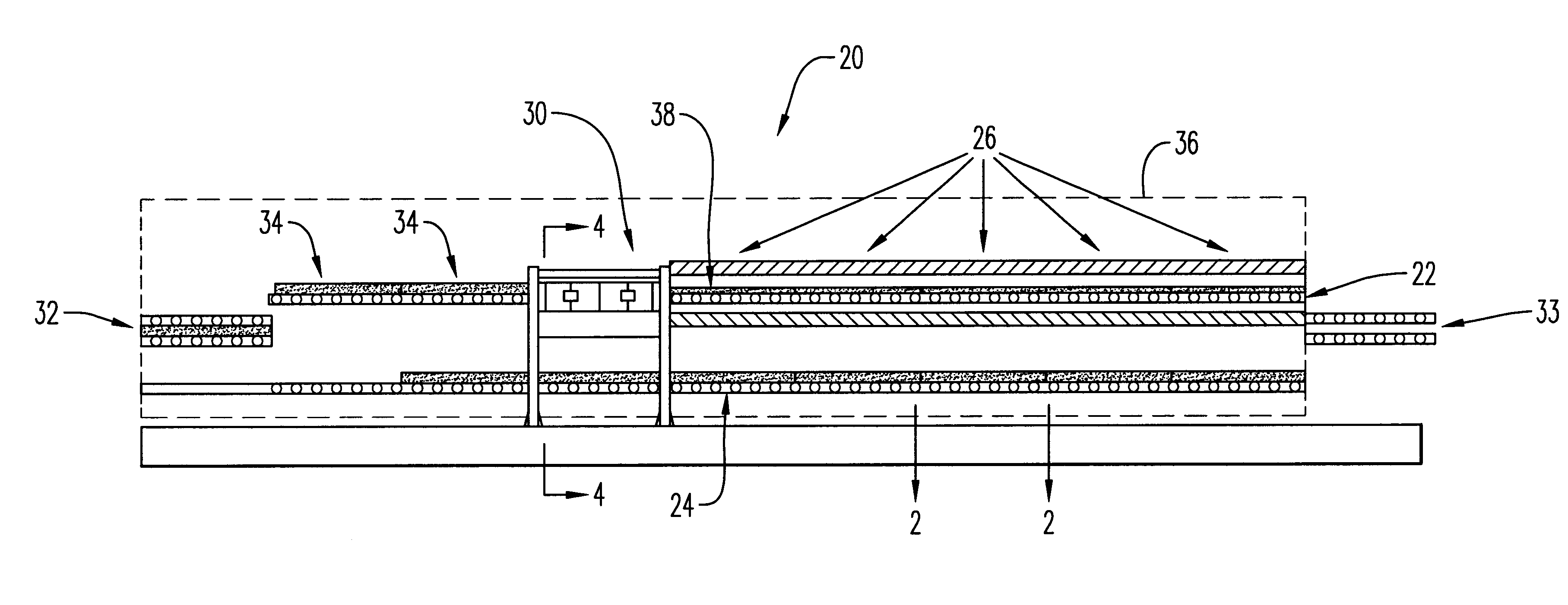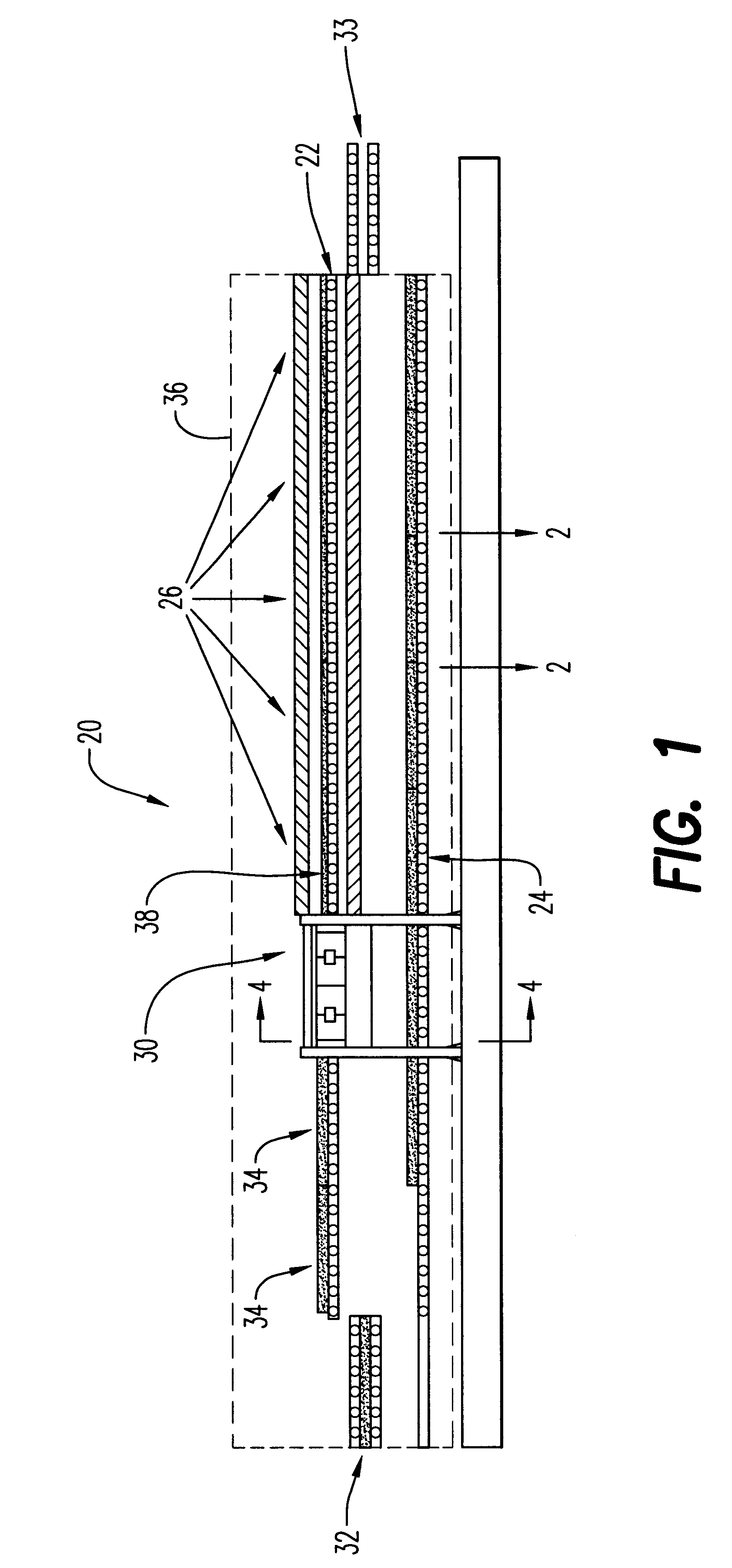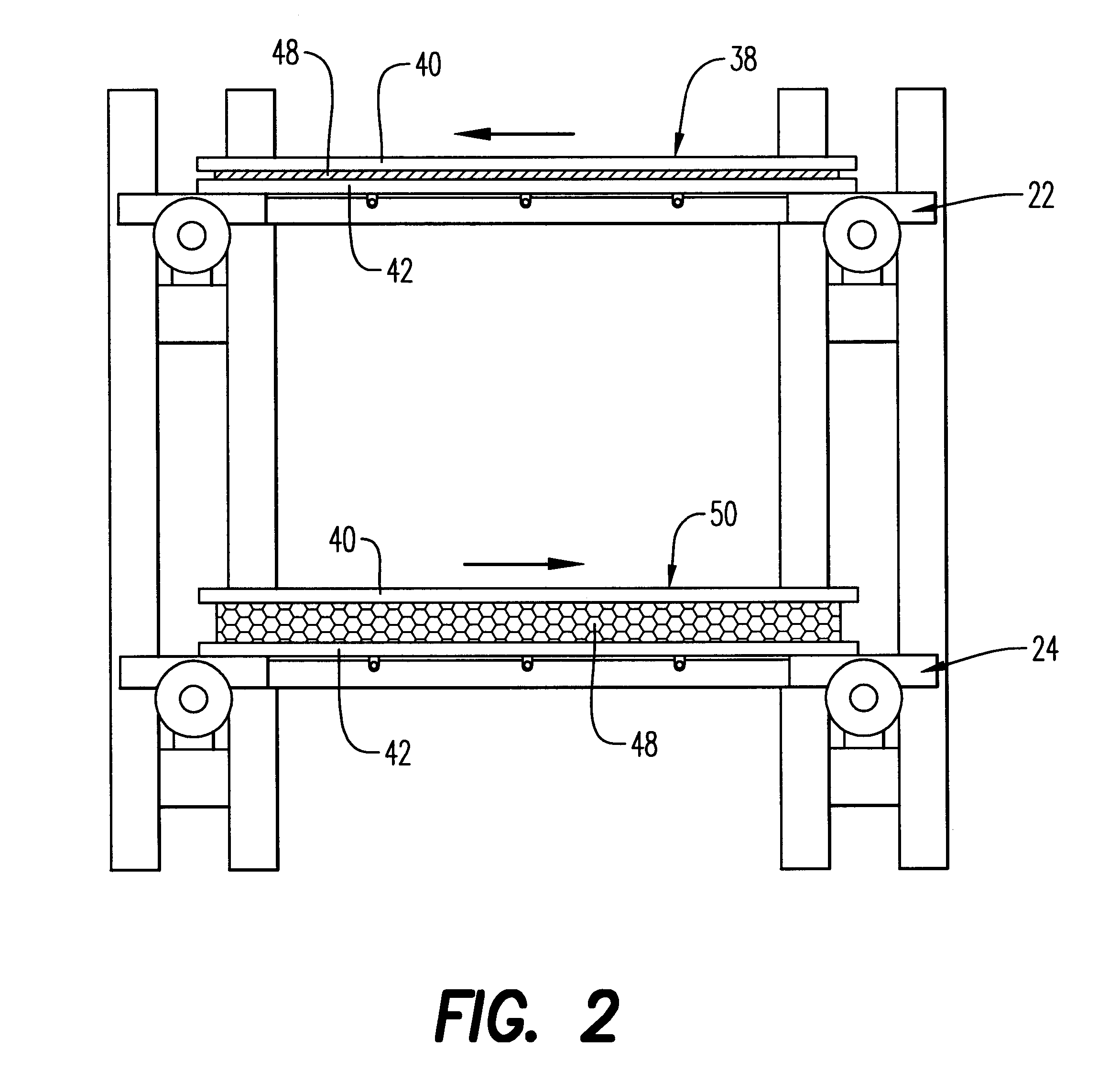Method for continuously producing expanded thermoformable materials
a technology of thermoformable materials and thermoformable materials, which is applied in the direction of manufacturing tools, applications, paper/cardboard articles, etc., can solve the problems of increased production costs, dangerous conditions, grave injuries or even death,
- Summary
- Abstract
- Description
- Claims
- Application Information
AI Technical Summary
Benefits of technology
Problems solved by technology
Method used
Image
Examples
Embodiment Construction
The present invention can best be described by reference to the attached figures, wherein FIGS. 1 through 5 depict the energy efficient continuous system 20 which is capable of producing expanded thermoformable material. System 20 preferably comprises a first conveyor means 22, a second conveyor means 24 enclosed within housing 36. First conveyor means 22 includes a plurality of heating zones 26, a heatable press zone 30, and a plurality of product cooling zones 34. A thermoformable assembly 38 comprising a first mold plate 40, a second mold plate 42, and a thermoformable material sheet 48 disposed therebetween is placed on a first conveyor means 22 for conveying through heating zones 26. Preferably, first mold plate 40 and second mold plate 42 are made of aluminum and are 3 to 4 millimeters in width.
As thermoformable assembly 38 is conveyed through heating zones 26, thermoformable material sheet 48 is heated to a temperature at which thermoformable material sheet 48 will adhesively...
PUM
| Property | Measurement | Unit |
|---|---|---|
| temperature | aaaaa | aaaaa |
| temperature | aaaaa | aaaaa |
| temperature | aaaaa | aaaaa |
Abstract
Description
Claims
Application Information
 Login to View More
Login to View More - R&D
- Intellectual Property
- Life Sciences
- Materials
- Tech Scout
- Unparalleled Data Quality
- Higher Quality Content
- 60% Fewer Hallucinations
Browse by: Latest US Patents, China's latest patents, Technical Efficacy Thesaurus, Application Domain, Technology Topic, Popular Technical Reports.
© 2025 PatSnap. All rights reserved.Legal|Privacy policy|Modern Slavery Act Transparency Statement|Sitemap|About US| Contact US: help@patsnap.com



